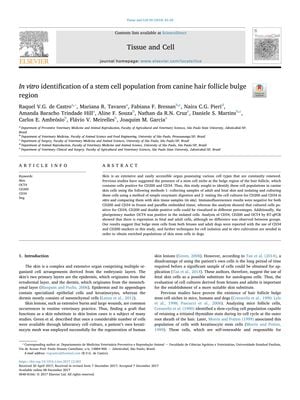In Vitro Identification of a Stem Cell Population from Canine Hair Follicle Bulge Region
December 2017
in “
Tissue and cell/Tissue & cell
”

TLDR Researchers found stem cells in dog hair follicles using specific markers.
The study aimed to identify stem cell populations in the canine hair follicle bulge region, which is believed to be a stem cell niche. Researchers collected skin samples from both adult and fetal dogs and isolated cells using enzymatic digestion. They then cultured these cells and tested for the presence of CD200 and CD34, markers associated with stem cells. Immunofluorescence tests on tissue samples were negative for CD200 and CD34, but cultured cells showed positive results for these markers, as well as for the pluripotency marker OCT4. RT-qPCR analysis confirmed the expression of CD34, CD200, and OCT4 in both fetal and adult cells, with no significant difference between the two groups. The study concluded that stem cells from the bulge region of canine hair follicles can be identified using CD34 and CD200 markers, but improved cell isolation and cultivation techniques are necessary to enrich skin stem cell populations in dogs.
